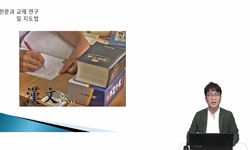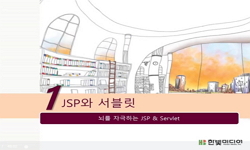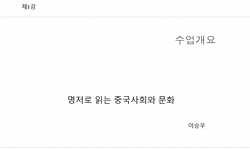Almost every document and national literature were historically recorded in Chinese until the late Joseon Dynasty era in this country, and they remain as a massive amount of data to us currently. In addition, since absolute majority of vocabulary of o...
http://chineseinput.net/에서 pinyin(병음)방식으로 중국어를 변환할 수 있습니다.
변환된 중국어를 복사하여 사용하시면 됩니다.
- 中文 을 입력하시려면 zhongwen을 입력하시고 space를누르시면됩니다.
- 北京 을 입력하시려면 beijing을 입력하시고 space를 누르시면 됩니다.
https://www.riss.kr/link?id=A100038815
- 저자
- 발행기관
- 학술지명
- 권호사항
-
발행연도
2013
-
작성언어
-
- 주제어
-
KDC
810
-
등재정보
KCI등재
-
자료형태
학술저널
-
수록면
99-118(20쪽)
-
KCI 피인용횟수
0
- DOI식별코드
- 제공처
-
0
상세조회 -
0
다운로드
부가정보
다국어 초록 (Multilingual Abstract)
Although the Sino-Korean subject positioned itself officially in schools in 1972, its status became too low and now its existence in itself has got uncertain as it turns into 'the 7th Educational Curriculum', 'the revised 2007 Educational Curriculum' and 'the revised 2009 Educational Curriculum' after it became an optional course in middle schools in the 6th Educational Curriculum.
Gyeonggido Office of Education did not expanded chinese character teachers for the last ten years, and as a result, around more than 200 Sino-Korean teachers decreased for the past ten years. It is a result that middle schools did not select Sino-Korean, and they are fiercely competing to survive with other subjects in every school. Sino-Korean teachers are suffering from pressure due to TO reduction and it's true that their appointment is not amicable.
Naksaeng High School in Bundang encouraging as it has made a case that the number of class hours increases by means of teachers' efforts, but it is uncertain when it will face a crisis without political consideration from the nation or local education offices.
What should be done in established institutions in order to solve this is to put pressure on governmental organs and the person in charge for the policy to implement language planning stressing Chinese characters and Classics first of all and secondly it should be acknowledged that Sino-Korean education has two axes of 'language life' and 'Sino-Korean' to compose consequent curriculum, and thirdly, it's necessary for Sino-Korean teachers to be promoted more to professional and management positions.
For solutions other than established institutions, Chinese characters and Chinese Classics should be exposed more socially to expand opportunities for the public to access to them easily, and a variety of efforts need to be provided so that people can increase interest in and curiosity about Sino-Korean.
Solidarity and efforts of parties concerned are urgent including pressure on the government for studies on fundamental and concrete policy and language education, exposure of chinese characters to the eyes of the people etc.
Almost every document and national literature were historically recorded in Chinese until the late Joseon Dynasty era in this country, and they remain as a massive amount of data to us currently. In addition, since absolute majority of vocabulary of our language is composed of Sino-Korean words, it is essential in language life as well.
Although the Sino-Korean subject positioned itself officially in schools in 1972, its status became too low and now its existence in itself has got uncertain as it turns into 'the 7th Educational Curriculum', 'the revised 2007 Educational Curriculum' and 'the revised 2009 Educational Curriculum' after it became an optional course in middle schools in the 6th Educational Curriculum.
Gyeonggido Office of Education did not expanded chinese character teachers for the last ten years, and as a result, around more than 200 Sino-Korean teachers decreased for the past ten years. It is a result that middle schools did not select Sino-Korean, and they are fiercely competing to survive with other subjects in every school. Sino-Korean teachers are suffering from pressure due to TO reduction and it's true that their appointment is not amicable.
Naksaeng High School in Bundang encouraging as it has made a case that the number of class hours increases by means of teachers' efforts, but it is uncertain when it will face a crisis without political consideration from the nation or local education offices.
What should be done in established institutions in order to solve this is to put pressure on governmental organs and the person in charge for the policy to implement language planning stressing Chinese characters and Classics first of all and secondly it should be acknowledged that Sino-Korean education has two axes of 'language life' and 'Sino-Korean' to compose consequent curriculum, and thirdly, it's necessary for Sino-Korean teachers to be promoted more to professional and management positions.
For solutions other than established institutions, Chinese characters and Chinese Classics should be exposed more socially to expand opportunities for the public to access to them easily, and a variety of efforts need to be provided so that people can increase interest in and curiosity about Sino-Korean.
Solidarity and efforts of parties concerned are urgent including pressure on the government for studies on fundamental and concrete policy and language education, exposure of chinese characters to the eyes of the people etc.
국문 초록 (Abstract)
1972년에 한문교과는 학교 안에 정식으로 자리했지만 제6차 교육과정에서 중학교가 선택과목이 된 이후 '제7차 교육과정'과 '개정 2007 교육과정' 그리고 '개정 2009 교육과정'으로 변화하면서 그 위상이 너무 낮아져 이제 한문교육은 존재 자체가 불확실하게 되었다.
경기도 교육청은 지난 10년 동안 한문교사를 확충하지 않았으며, 현재는 2003년에 비하여 200여 명의 한문교사가 줄었다. 이는 중등학교들이 한문을 선택하지 않은 결과이며 다른 교과와 생존을 위한 치열한 경쟁을 벌이고 있다. 한문교사들은 TO감 압박에 시달리고 있으며 내신 발령 또한 원만치 않은 상황이다.
분당의 낙생고는 교사들의 노력으로 시수가 증가하는 경우를 만들어 고무적이지만, 국가나 시ㆍ도 교육청의 정책적인 배려가 없이는 이 또한 언제 위기를 맞을지 모르는 상황이 되고 있다.
이를 해결하기 위해서 제도권 내에서 해야 할 일은 우선 국가 기관과 편수 담당자에 대하여 한자ㆍ한문을 중시한 어문정책을 실시하도록 압박해야 하며 둘째, 한문과교육이 '언어생활'과 '한문 고전'이라는 두 개의 축이 있다는 것을 인정하고, 그에 따른 교육과정을 구성해야 하며 셋째, 한문교사들이 전문직과 관리직으로 더 많은 승진을 할 필요가 있다.
제도권 외적인 해결 방안으로는 범사회적으로 한자ㆍ한문이 더 많이 노출되어 국민들이 쉽게 접할 수 있는 기회를 확대하여야 하며, 국민들이 한문에 대한 흥미와 호기심을 제고할 수 있도록 다양한 노력이 제공되어야 한다.
정리하면 한문과교육이 정상화되려면 근본적이고도 구체적인 정책론의 연구와 어문교육에 대한 대정부 압박, 국민들의 시야에 한자를 노출하는 등 관계자들의 결집과 노력이 시급하다는 것이다.
우리나라는 역사 이래 조선 말까지 거의 모든 문서와 국서가 한문으로 기록되었으며, 현재 방대한 양의 자료로 우리에게 남아 있다. 또한 우리말 어휘의 절대 다수가 한자어이기 때문에 언...
우리나라는 역사 이래 조선 말까지 거의 모든 문서와 국서가 한문으로 기록되었으며, 현재 방대한 양의 자료로 우리에게 남아 있다. 또한 우리말 어휘의 절대 다수가 한자어이기 때문에 언어생활에서도 필수불가결하다.
1972년에 한문교과는 학교 안에 정식으로 자리했지만 제6차 교육과정에서 중학교가 선택과목이 된 이후 '제7차 교육과정'과 '개정 2007 교육과정' 그리고 '개정 2009 교육과정'으로 변화하면서 그 위상이 너무 낮아져 이제 한문교육은 존재 자체가 불확실하게 되었다.
경기도 교육청은 지난 10년 동안 한문교사를 확충하지 않았으며, 현재는 2003년에 비하여 200여 명의 한문교사가 줄었다. 이는 중등학교들이 한문을 선택하지 않은 결과이며 다른 교과와 생존을 위한 치열한 경쟁을 벌이고 있다. 한문교사들은 TO감 압박에 시달리고 있으며 내신 발령 또한 원만치 않은 상황이다.
분당의 낙생고는 교사들의 노력으로 시수가 증가하는 경우를 만들어 고무적이지만, 국가나 시ㆍ도 교육청의 정책적인 배려가 없이는 이 또한 언제 위기를 맞을지 모르는 상황이 되고 있다.
이를 해결하기 위해서 제도권 내에서 해야 할 일은 우선 국가 기관과 편수 담당자에 대하여 한자ㆍ한문을 중시한 어문정책을 실시하도록 압박해야 하며 둘째, 한문과교육이 '언어생활'과 '한문 고전'이라는 두 개의 축이 있다는 것을 인정하고, 그에 따른 교육과정을 구성해야 하며 셋째, 한문교사들이 전문직과 관리직으로 더 많은 승진을 할 필요가 있다.
제도권 외적인 해결 방안으로는 범사회적으로 한자ㆍ한문이 더 많이 노출되어 국민들이 쉽게 접할 수 있는 기회를 확대하여야 하며, 국민들이 한문에 대한 흥미와 호기심을 제고할 수 있도록 다양한 노력이 제공되어야 한다.
정리하면 한문과교육이 정상화되려면 근본적이고도 구체적인 정책론의 연구와 어문교육에 대한 대정부 압박, 국민들의 시야에 한자를 노출하는 등 관계자들의 결집과 노력이 시급하다는 것이다.
목차 (Table of Contents)
- 국문초록
- Ⅰ. 한문과교육의 浮沈
- Ⅱ. 경기 한문교육의 변화 추이
- Ⅲ. 해결 방안의 모색
- Ⅳ. 결론
- 국문초록
- Ⅰ. 한문과교육의 浮沈
- Ⅱ. 경기 한문교육의 변화 추이
- Ⅲ. 해결 방안의 모색
- Ⅳ. 결론
- 참고문헌
- Abstract
참고문헌 (Reference)
1 노무라 마사아키, "한자의 미래" 커뮤니케이션북스 2007
2 어문정책정상화추진회, "한자교육의 필요성에서 헌법소원에 이르기까지" 2012
3 교육과학기술부, "한문과 교육과정" 2011
4 국회지속가능경제연구회, "글로벌시대 국가경쟁력 강화를 위한 제2외국어∕한문교육 정상화 방안" 2013
5 교육과학기술부, "고등학교 교육과정 해설 13―한문―" 2007
6 蘇培成, "現代漢字學" 學古房 2007
7 교육인적자원부, "漢文敎育用 基礎漢字 1800字 調整白書" 2001
1 노무라 마사아키, "한자의 미래" 커뮤니케이션북스 2007
2 어문정책정상화추진회, "한자교육의 필요성에서 헌법소원에 이르기까지" 2012
3 교육과학기술부, "한문과 교육과정" 2011
4 국회지속가능경제연구회, "글로벌시대 국가경쟁력 강화를 위한 제2외국어∕한문교육 정상화 방안" 2013
5 교육과학기술부, "고등학교 교육과정 해설 13―한문―" 2007
6 蘇培成, "現代漢字學" 學古房 2007
7 교육인적자원부, "漢文敎育用 基礎漢字 1800字 調整白書" 2001
동일학술지(권/호) 다른 논문
-
- 동양한문학회(구 부산한문학회)
- 강정화(Kang Jeong-hwa)
- 2013
- KCI등재
-
- 동양한문학회(구 부산한문학회)
- 김왕규(Kim, Wang-kyu)(金王奎)
- 2013
- KCI등재
-
- 동양한문학회(구 부산한문학회)
- 송병렬(Song Pyung Nyul)
- 2013
- KCI등재
-
- 동양한문학회(구 부산한문학회)
- 송병우(Song Byung-Woo)
- 2013
- KCI등재
분석정보
인용정보 인용지수 설명보기
학술지 이력
| 연월일 | 이력구분 | 이력상세 | 등재구분 |
|---|---|---|---|
| 2022 | 평가예정 | 재인증평가 신청대상 (재인증) | |
| 2019-01-01 | 평가 | 등재학술지 선정 (계속평가) |  |
| 2018-12-01 | 평가 | 등재후보로 하락 (계속평가) |  |
| 2015-01-01 | 평가 | 등재학술지 유지 (등재유지) |  |
| 2011-01-01 | 평가 | 등재학술지 유지 (등재유지) |  |
| 2008-01-01 | 평가 | 등재학술지 선정 (등재후보2차) |  |
| 2007-01-01 | 평가 | 등재후보 1차 PASS (등재후보1차) |  |
| 2005-01-01 | 평가 | 등재후보학술지 선정 (신규평가) |  |
학술지 인용정보
| 기준연도 | WOS-KCI 통합IF(2년) | KCIF(2년) | KCIF(3년) |
|---|---|---|---|
| 2016 | 0.64 | 0.64 | 0.55 |
| KCIF(4년) | KCIF(5년) | 중심성지수(3년) | 즉시성지수 |
| 0.54 | 0.5 | 1.236 | 0.25 |




 KCI
KCI 스콜라
스콜라






